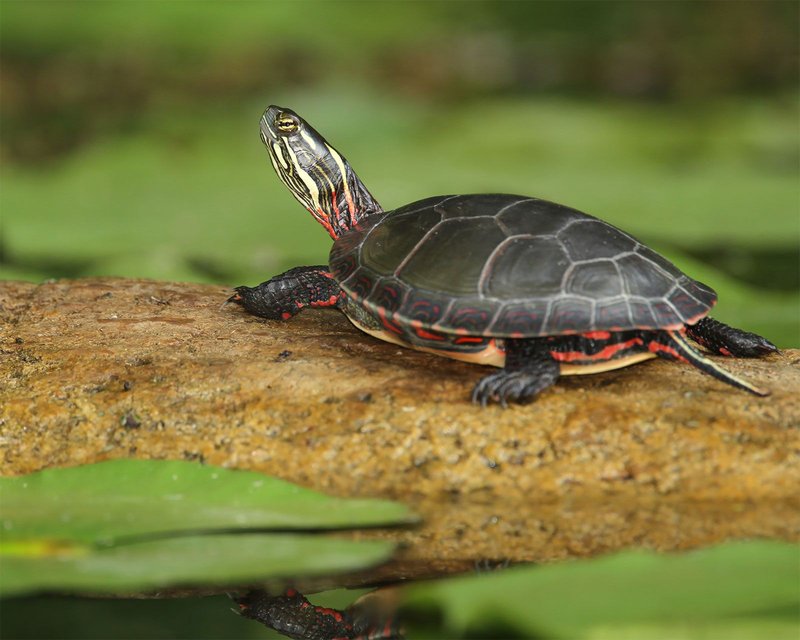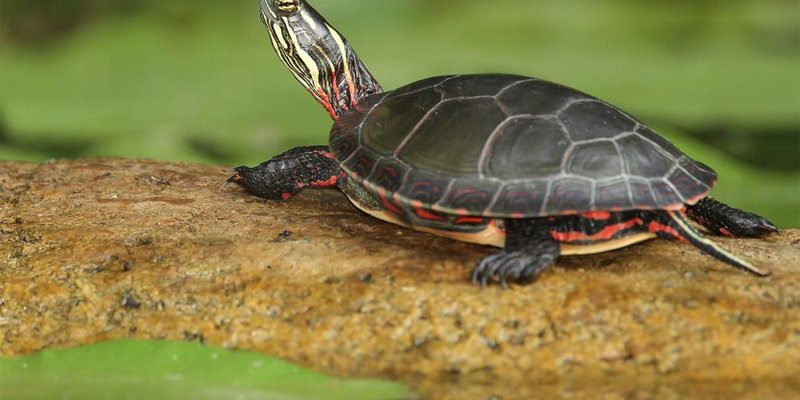
Whether you’re a novice looking to learn more or an avid fan wanting to engage in some myth-busting, this article is here to help. From their habitat preferences to their diet, we’ll clear up common misunderstandings and provide solid facts about these beautiful creatures. So, let’s dive in!
Myth 1: Painted Turtles Are Just Small Versions of Other Turtles
You might be tempted to think that painted turtles are simply miniature versions of other turtle species, but that’s not quite correct. The painted turtle is a distinct species with its own unique characteristics. While they may share some features with other turtles, such as having a shell and being reptiles, their vibrant colors set them apart.
These turtles typically have a dark green or black shell adorned with bright red or yellow markings. This striking appearance can sometimes lead to the misconception that they’re just small or juvenile versions of other turtles. But let me explain: painted turtles grow up to 10 inches long, and their colors become more vivid as they age. This vibrant coloring serves not just for beauty but also for communication and attracting mates.
Understanding the differences among turtle species is crucial. So, if you’re ever at a pond and see a painted turtle basking in the sun, remember that it’s a unique member of the turtle family, not just a smaller version of something else.
Myth 2: Painted Turtles Can Live Anywhere
Another common belief is that painted turtles are so adaptable that they can thrive in any environment. While it’s true that they are quite resilient, they have specific habitat preferences. These turtles are typically found in freshwater bodies such as ponds, lakes, and rivers. They enjoy environments with plenty of vegetation, which serves as hiding spots from predators and a source of food.
You might be wondering why they’re picky about where they live. Well, painted turtles need shallow waters where they can bask in the sun and dive for cover when threatened. If they end up in deep, fast-moving waters, they may struggle to find food and safety. So, while they can tolerate a range of conditions, they definitely have their ideal spots, much like how you might prefer a cozy coffee shop over a noisy diner.
Myth 3: Painted Turtles Are Strictly Herbivores
Many people think that painted turtles stick to a vegetarian diet, but that’s not the full story. While they do enjoy munching on aquatic plants, they are actually omnivores. Painted turtles have a varied diet that includes insects, small fish, and even some carrion. This adaptability in their diet helps them thrive in different environments.
Imagine you’re at a buffet with all your favorite foods. Would you only stick to the salad? Probably not! Just like you, these turtles will take advantage of whatever food is available. In the wild, they’ll often feast on pond snails, worms, and small insects, especially during the warmer months when they need extra energy for growth and reproduction.
So, the next time you see a painted turtle, don’t assume they’re just nibbling on lettuce. They’re likely scouting for a protein-packed snack too!
Myth 4: Painted Turtles Are Low-Maintenance Pets
If you’re considering a painted turtle as a pet, you might have heard that they’re low-maintenance. While they might not require daily walks like a dog, they still need proper care. Maintaining their habitat, ensuring clean water, and providing a balanced diet are all essential aspects of turtle care.
For starters, painted turtles thrive in environments that mimic their natural habitats. This means you’ll need a tank with enough space for swimming and basking spots with UV light. It’s not just about putting them in any old aquarium. They also need filtered water to stay healthy and clean. Plus, their diet will require more than just turtle pellets; you’ll want to include fresh vegetables and occasional protein sources.
Don’t let this scare you off, though! Caring for a painted turtle can be rewarding, but it’s important to know what you’re getting into. Educating yourself before bringing one home is the key to a happy pet and a happy owner.
Myth 5: Painted Turtles Hibernate Like Bears
It’s easy to think that painted turtles hibernate in the same way that bears do, but the process is quite different. While painted turtles do experience a form of dormancy during colder months, it’s not exactly hibernation. Instead, they enter a state called brumation.
During brumation, painted turtles become less active and may not eat as much, but they don’t completely shut down like bears do. Instead of going deep into a cozy den, these turtles might bury themselves in the mud at the bottom of ponds or lakes. This keeps them safe from freezing temperatures while still allowing them to breathe and stay somewhat alert.
This means that if you live in a colder climate, you won’t find your painted turtle tucked away in a warm corner. Instead, they’ll be chilling out until the weather warms up, at which point they’ll emerge, ready to bask in the sun again.
Myth 6: Painted Turtles Are Aggressive
If you’ve ever seen a turtle in a video snapping at something, you might think they’re all aggressive creatures. But painted turtles are generally quite peaceful and social animals. Sure, they might hiss or show their teeth when threatened, but that’s more about self-defense than aggression.
In their natural habitat, painted turtles often bask together on logs and rocks, happily soaking in the sun. They aren’t territorial like some other animals; instead, they’re quite happy to share space. Of course, like any animal, each individual has its personality. Some might be more skittish or curious than others, but overall, painted turtles tend to be friendly and social.
So, if you ever spot a painted turtle in the wild, take a moment to enjoy their calm demeanor. They’re not out to chase you away; they’re just trying to soak up the sun!
Painted turtles are fascinating creatures with a lot of depth beyond their charming appearance. By busting these myths, we gain a clearer understanding of their unique needs and behaviors. Whether you’re admiring them in the wild or considering one as a pet, knowing the facts can enhance your experience.
So, the next time you come across a painted turtle, remember the vibrant creature is not just a pretty face; it’s a resilient survivor with its own set of fascinating traits. Whether you’re in a conversation about wildlife or simply enjoying nature, you’ll now have a treasure trove of knowledge to share about these remarkable reptiles!

